06 PV loop
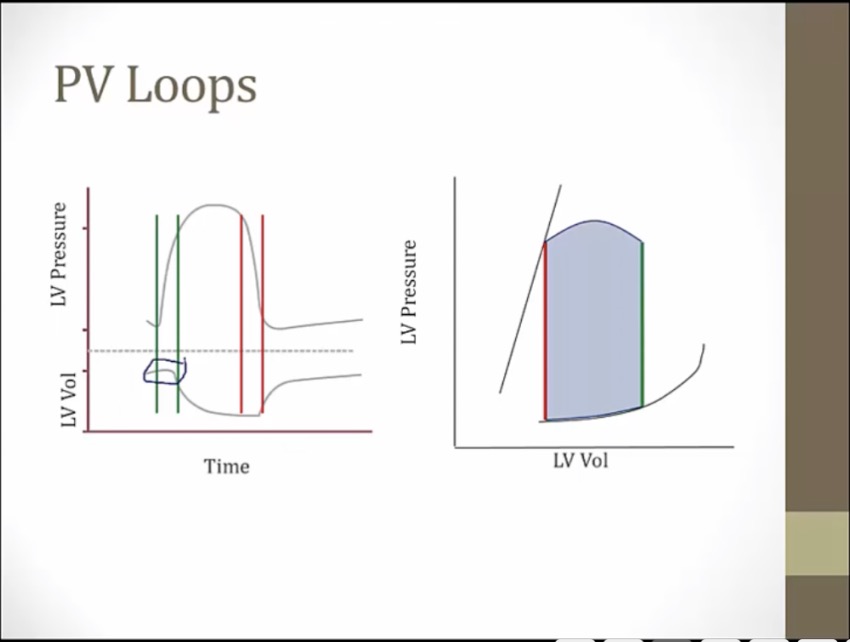
- volume on bottom, pressure on top
- right: take volume and pressure of each time and plot against one another
- green: volume not changing, pressure go way up, isovolumic contraction. Both valves closed
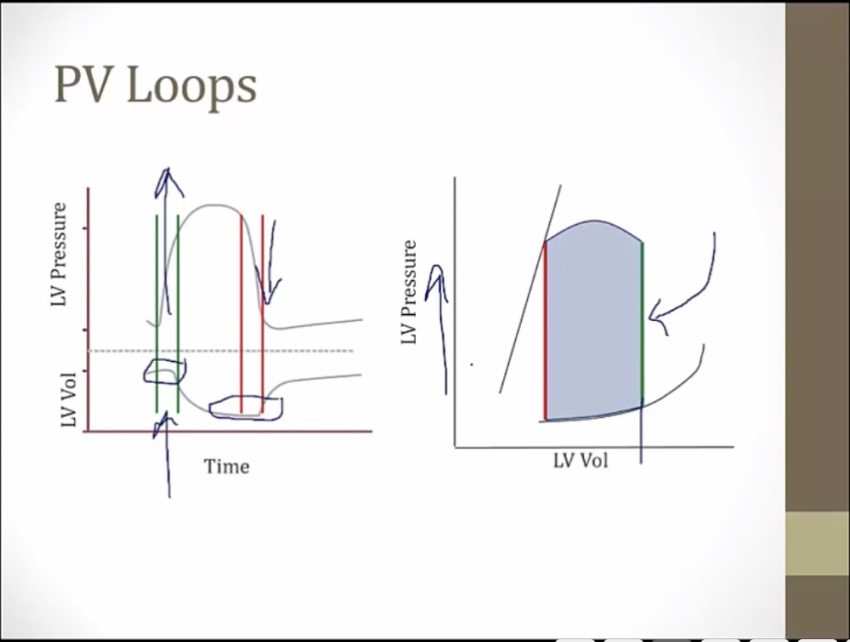
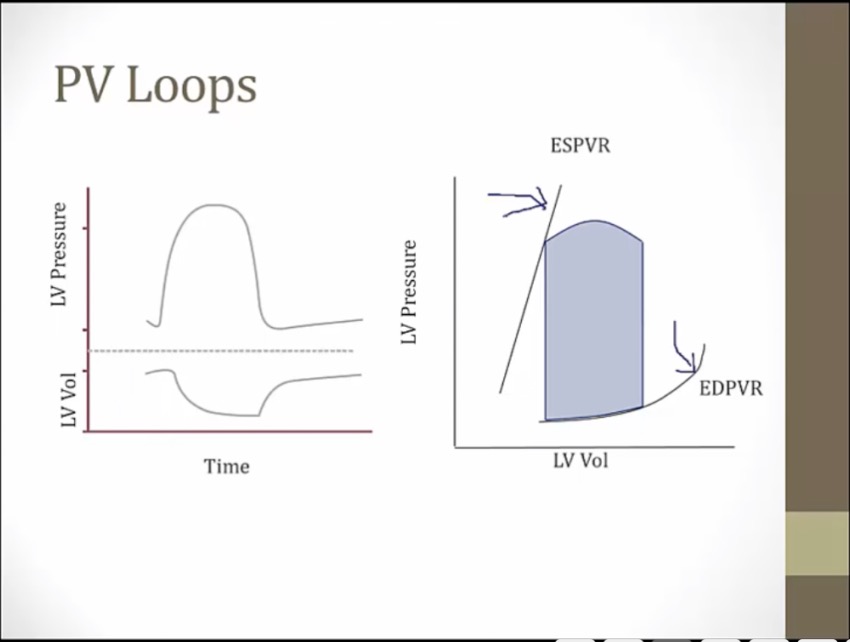
- top left point: end of systole
- bottom right point: end of diastole
- left line: end systolic pressure volume relationship, determined by myocardium characteristics. Adding/removing blood at end of systole moves along this line
- right line: end diastolic pv relationship
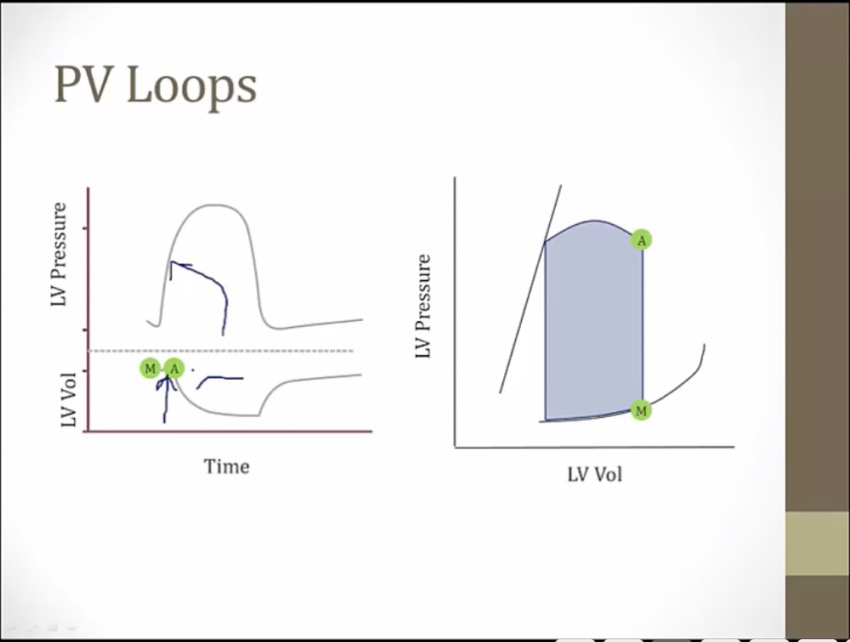
- MV closes at beginning of isovolumic contraction
- pressure so high aortic valve opens
- volume falls in LV, blood leaving
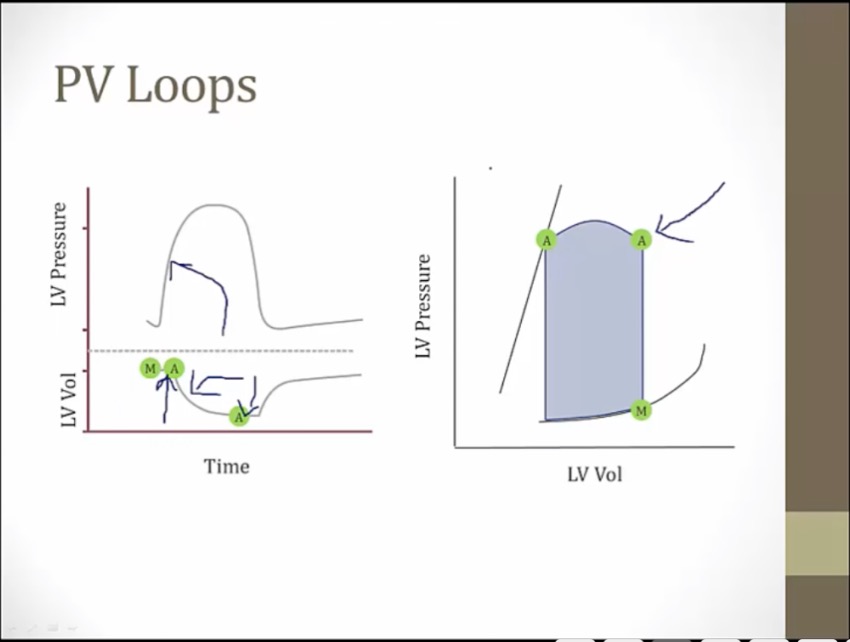
- AV open, contraction
- AV closes, isovolumic relaxation
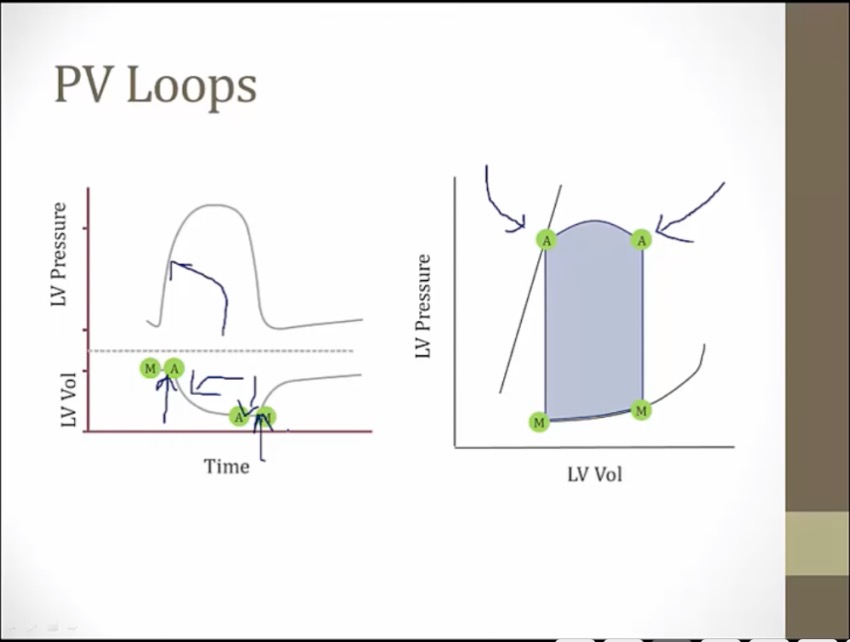
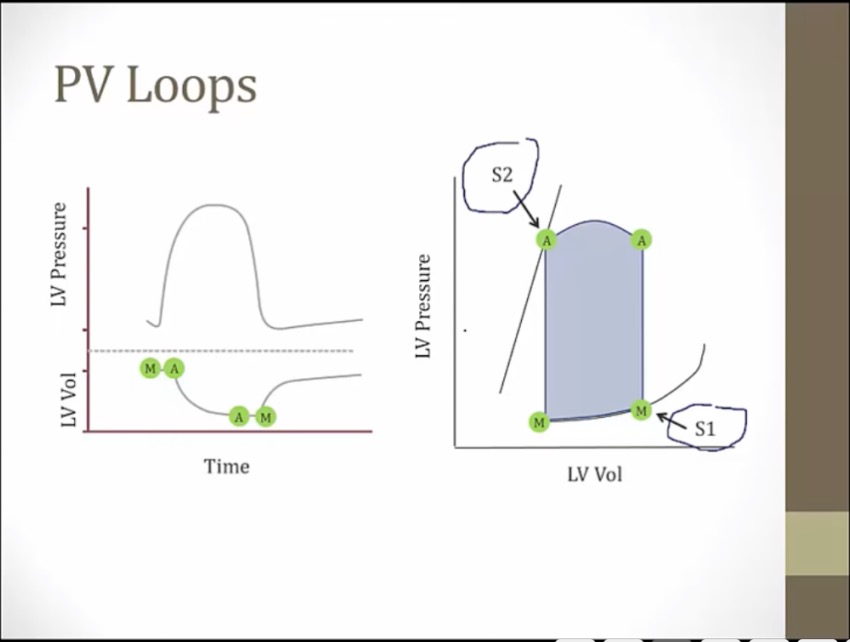
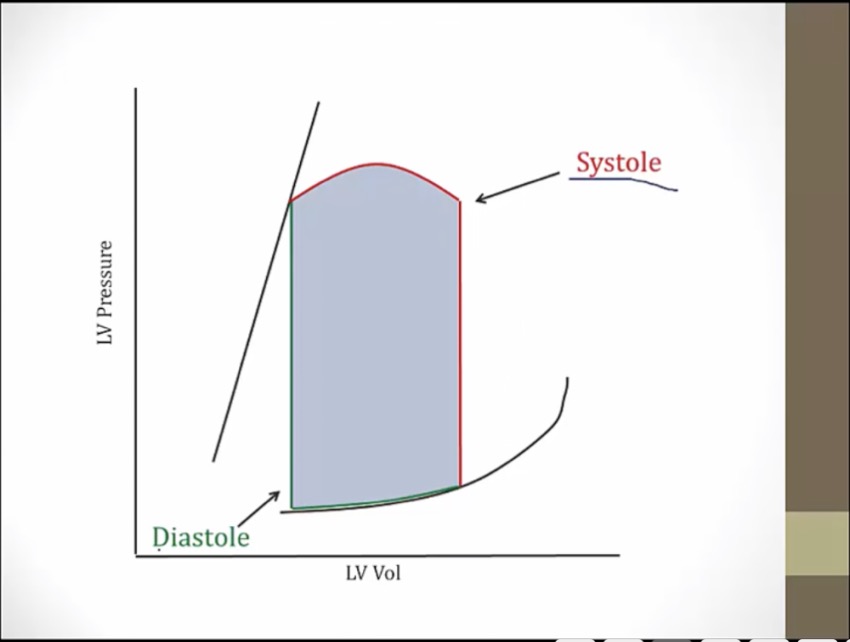
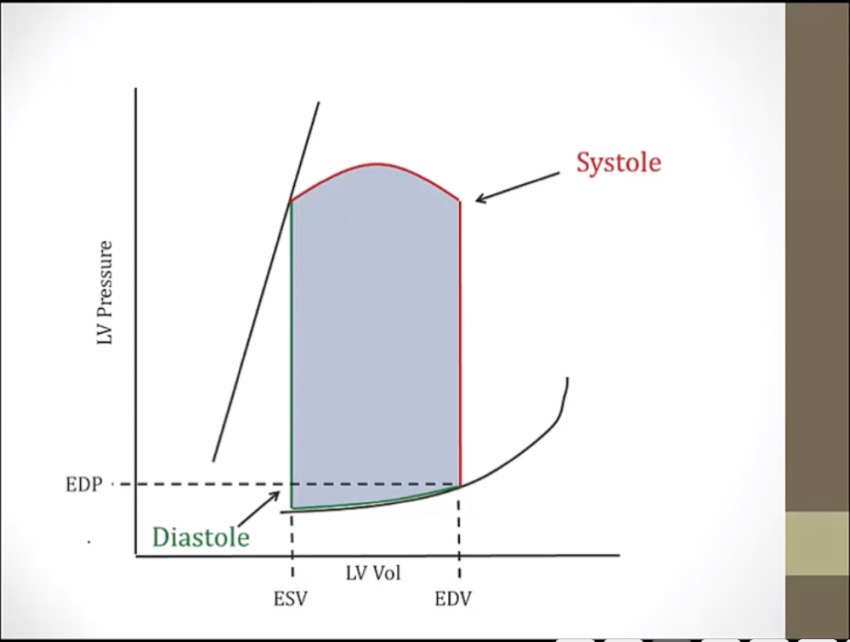
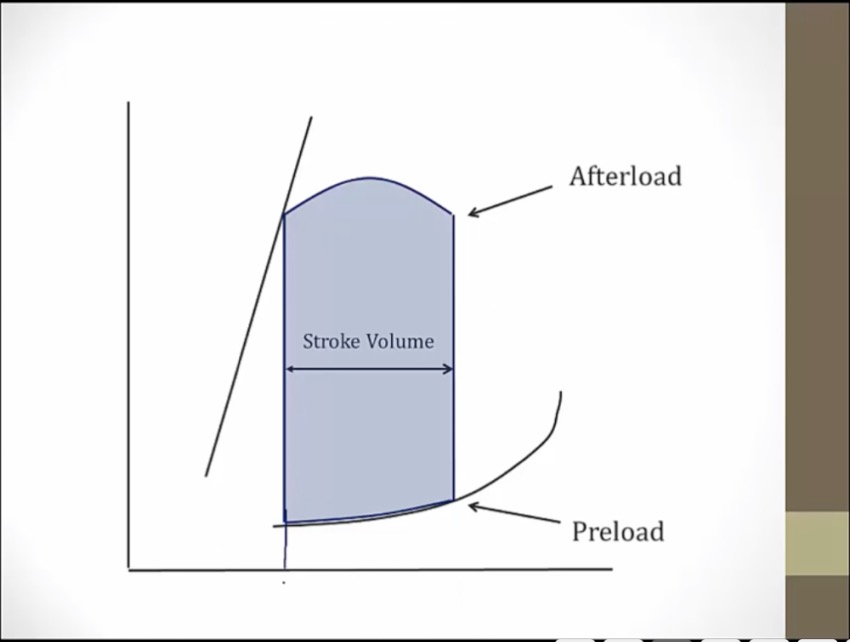
- SV: difference between ESV and EDV, volume ejected
- more afterload, higher pressure LV has to rise to overcome
Changes
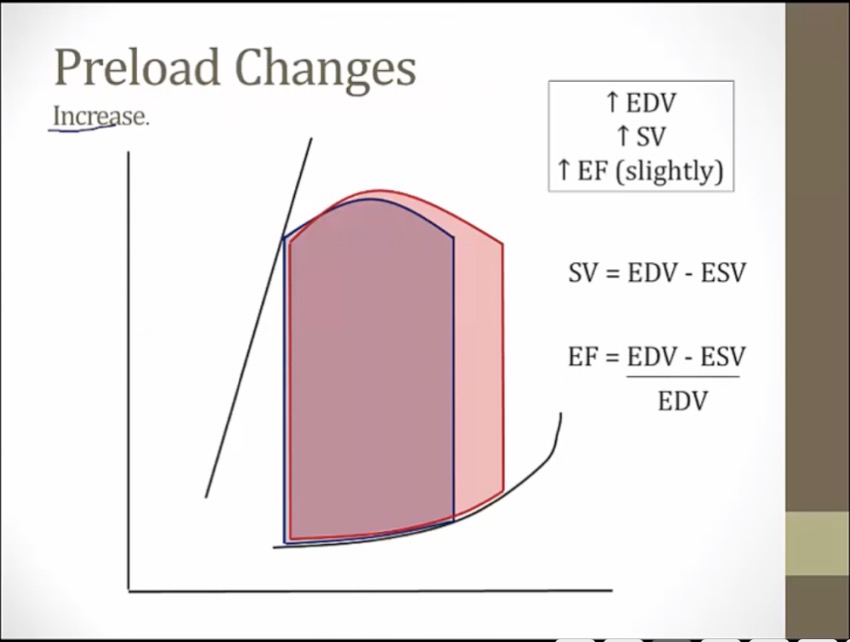
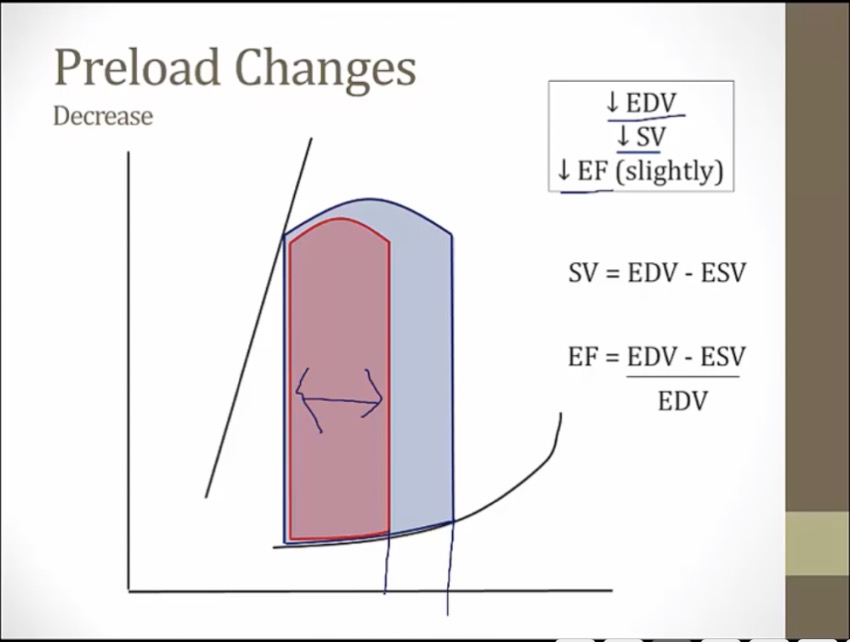
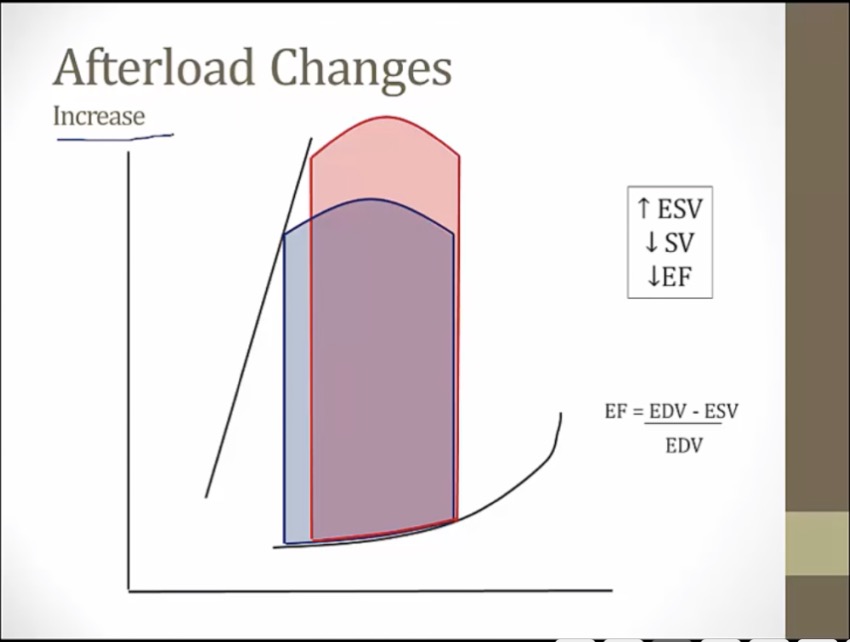
- hit left line sooner, at higher volume and pressure
- harder to eject blood, eject less blood
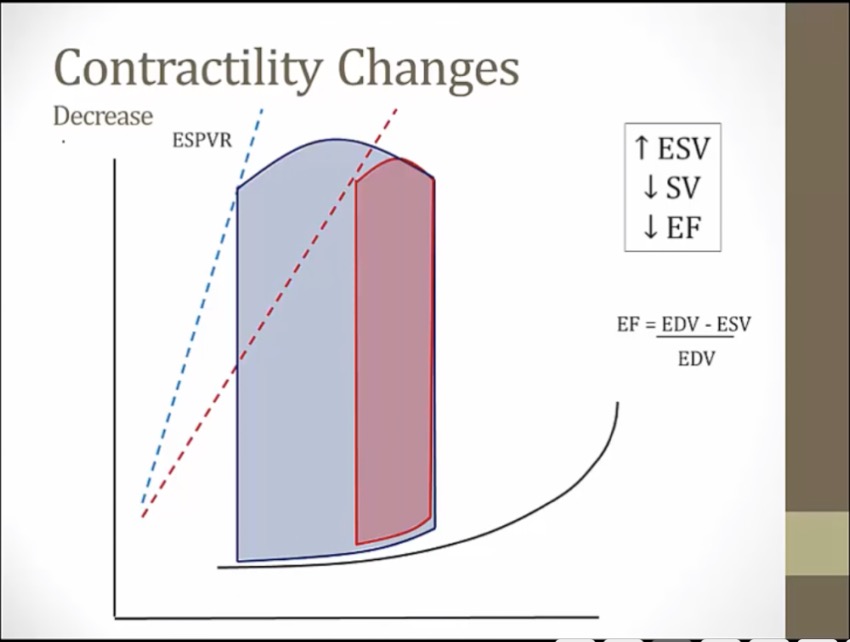
- contractility determines ESPVR
- less contractility, less blood pushed out, more blood left behind
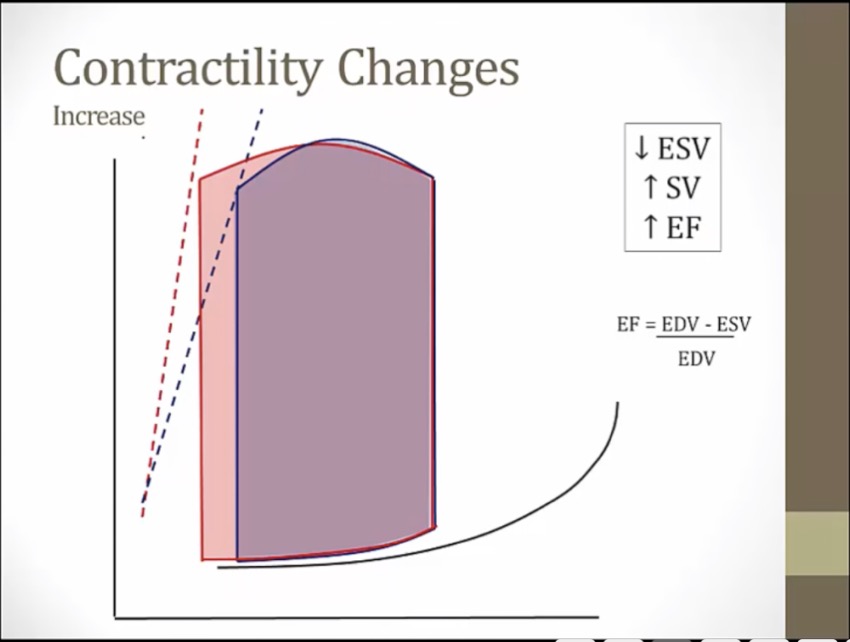
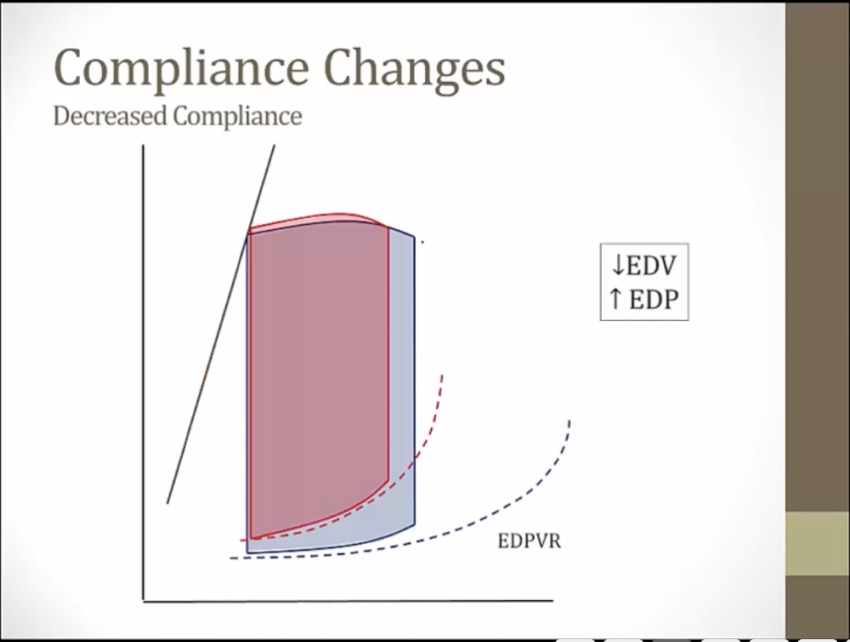
- compliance determines preload
- ventricle cannot fill and stiffer, higher pressure, lower volume
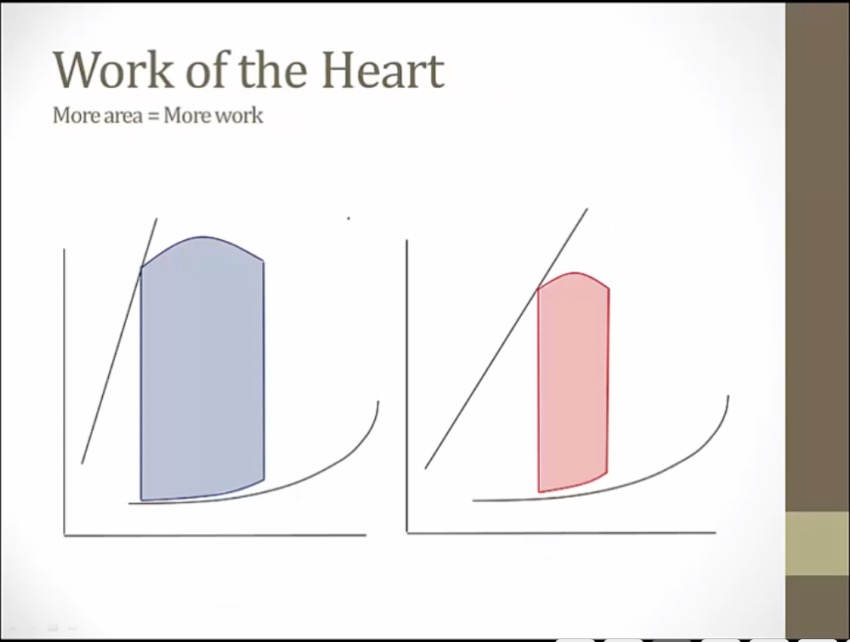
- area: how much volume pumping x how much pressure generating
Pathology
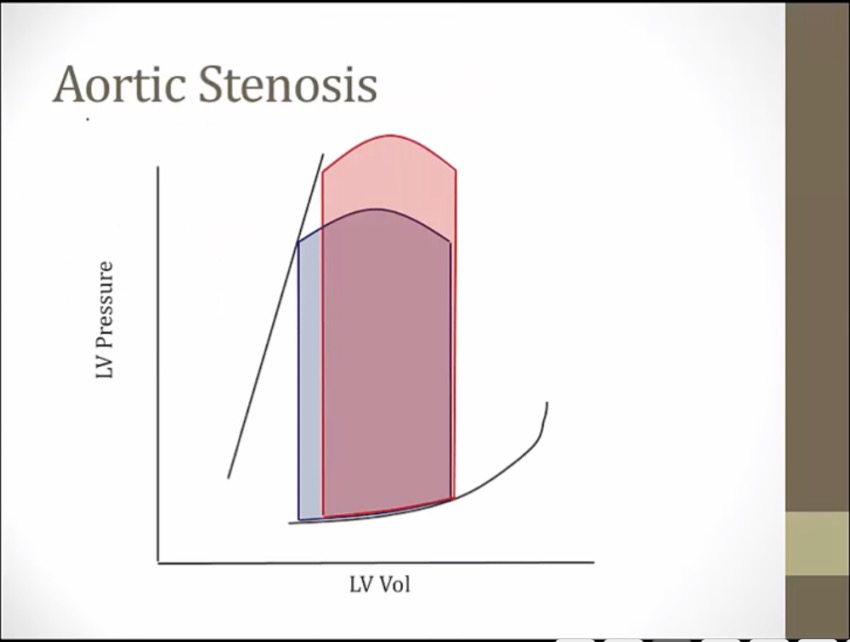
- higher afterload, lower SV, higher ESV
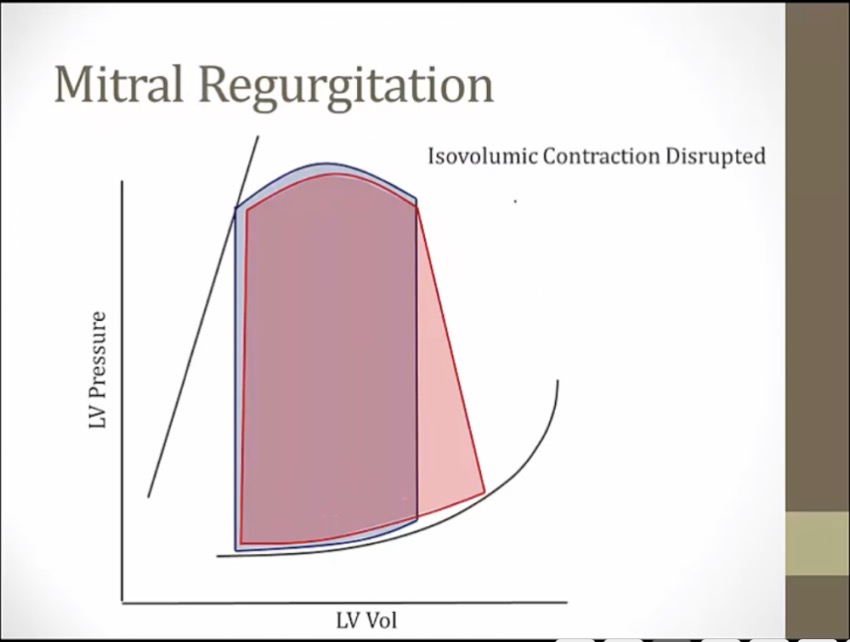
- during isovolumic contraction, blood leak from LV to LA, falling

- blood filling ventricle during relaxation
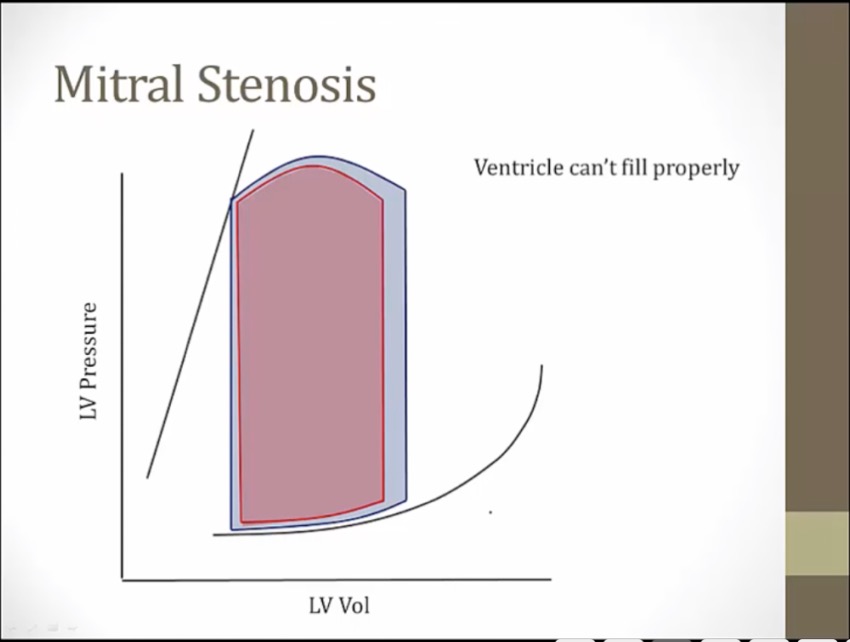
Backlinks




















